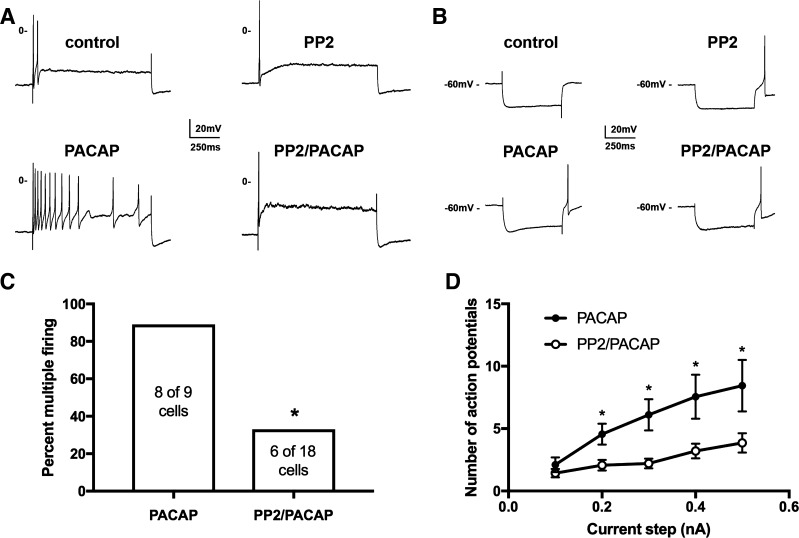Fig. 6.
Src family inhibitor PP2 pretreatment suppresses the PACAP-induced increase in excitability without inhibiting rectification in current-induced hyperpolarizations. A: example traces illustrating the increase in excitability by 20 nM PACAP in a control cell (left traces) and example traces from a second cell illustrating the suppression of the PACAP-induced increase in excitability following pretreatment with 10 µM PP2 (right traces). B: in the control cell before PACAP, there was minimal rectification in the current-induced hyperpolarization and no posthyperpolarization-induced action potential. During 20 nM PACAP, the rectification became more evident and an action potential was elicited at the termination of the hyperpolarization. In the 10 µM PP2-pretreated cell before PACAP, there was no evidence of rectification in the hyperpolarizing step, but an action potential was initiated, when the hyperpolarization was terminated. In contrast, during PACAP application, rectification was evident in the current-induced hyperpolarization and an action potential was initiated after termination of the hyperpolarization. C: the percentage of cells exhibiting multiple firing (>5 action potentials) in PACAP alone (8 of 9) was significantly greater than when exposed to PACAP after pretreatment to 10 µM PP2 (6 of 18) (*P = 0.02, χ2). D: averaged excitability curves show that PP2 greatly suppressed the PACAP-induced increase in excitability. Asterisks indicate that the number of action potentials generated at each current step was significantly greater in PACAP (n = 9) than in PP2 and PACAP (n = 14; unpaired t-test, P = 0.008 for 0.2 nA: P = 0.002 for 0.3 nA; P = 0.013 for 0.4 nA; P = 0.024 for 0.5 nA).

